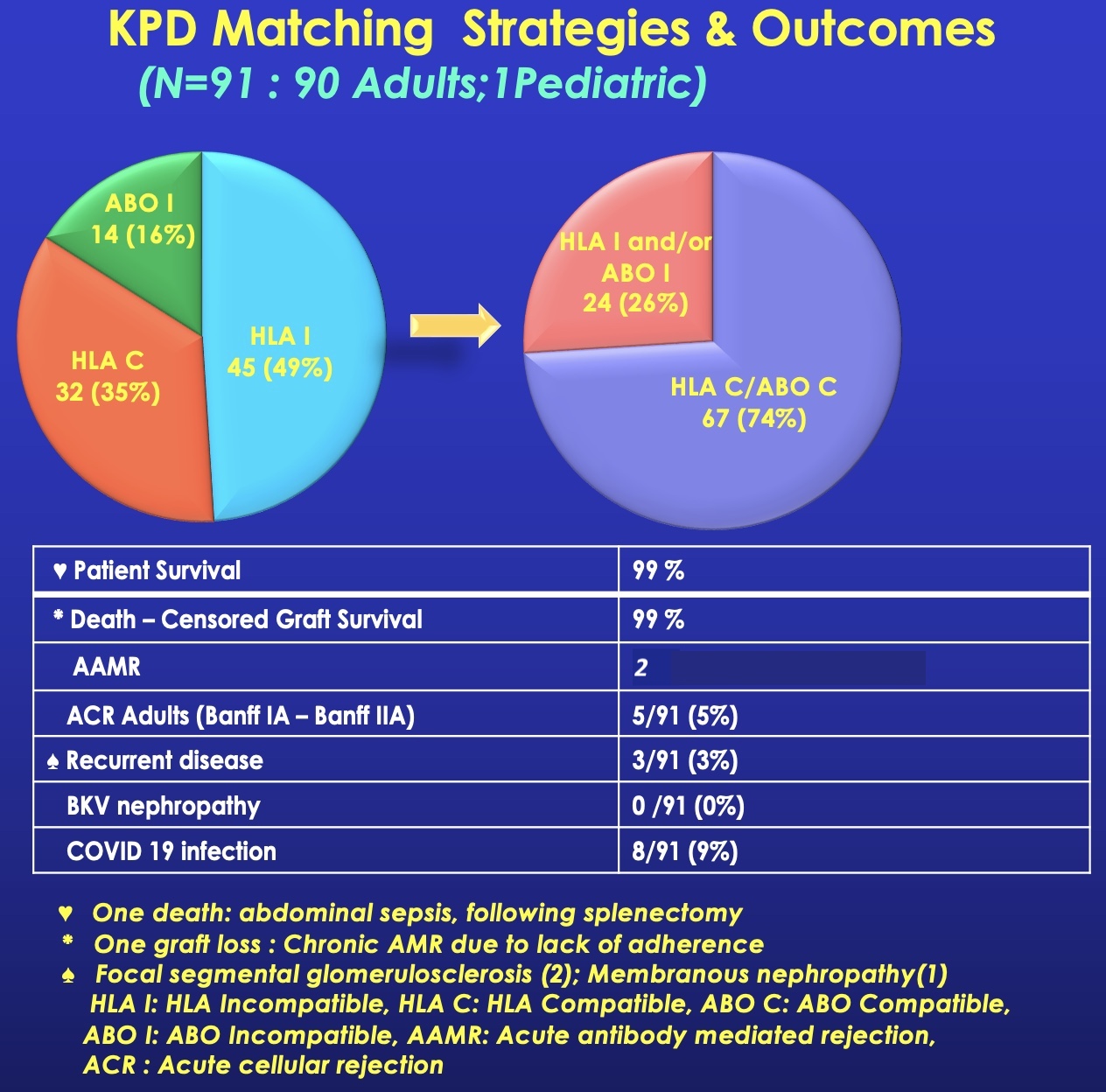Kidney paired donation: Experience of a single center high volume program
Khalid AlMeshari1, Jens Brockmann1, Dieter Broering1, Tariq Ali1.
1Organ Transplant Center, King Faisal Specialist Hospital & Research Center, Riyadh, Saudi Arabia
Introduction: Kidney Paired Donation (KPD) necessitates the involvement of multiple centers. Yet, in the absence of regional or national programs, single-center KPD programs can be established. Though we have performed 415 KPD transplants since the inception of our program in 2016, but here we share our experience of year 2022, when we became one of the highest volumes single-center KPD program globally.
Methods: Patients who underwent KPD between January 22-December 22 were included.
Our program’s niche features included
a) Inclusion of compatible pairs
b) Low-risk HLA incompatible (HLAi) matching for highly sensitized patients and
c) Low-risk ABO incompatible (ABOi) matching for highly sensitized patients.
The priorities of the matching process were to improve living kidney donor profile index (LKDPI) score, to provide better HLA class II matching and to reduce HLA class II Eplet mismatch load.
Results (Figure):
A total of 91 kidney transplants were performed through loops (90%) and chains (10%). A 9-way chain was completed over three days, while 2-way (n=9), 3-way (n=8), and 4-way (n=10) exchanges were done simultaneously.
49% entered the pool because of HLAi, 35% were HLA compatible with poor matches and/or low LKDPI scores, and 16% were ABOi.
64% had calculated panel-reactive antibody (cPRA) of 0-80%, 10% had cPRA of 80.1%-95%, and 26% had cPRA of 95.1% -100%.
Post-exchanges, 67 patients (74%) received kidneys that were both HLA and ABO compatible, while 24 patients (26%) received kidneys that were either HLAi or ABOi. 8 of the latter group received kidneys through low-risk ABO incompatibility (A2 to O=4, A1 to O=3, and A2B to B=1), whereas 16 underwent low-risk HLAi matching (4 were B flow cross-match positive, and 12 were both T and B cross-match positive). Following these exchanges, the average LKDPI score stood at -7.4, with an average HLA-mismatches of 1.3/1.4/0.85/0.59 at A/B/DR/DQ respectively. Moreover, the average Eplet mismatch load was 18 for HLA class II and 7 for DQ.
One-year patient and graft survival was 99%. Two patients experienced antibody mediated rejection while acute cellular rejection (Banff category 1A or above) occurred in 5% of cases.
Conclusion: To our knowledge, the annual volume of KPD transplants in 2022 at our center stands as the highest number ever recorded at a single institution. Furthermore, despite a relatively small pool size, our matching strategies for very highly sensitized HLA incompatible pairs (cPRA 95-100%) yielded high rate of successful transplants to this difficult to match group.

[1] Kidney Paired Donation
[2] Outcomes
[3] HLA incompatibility
